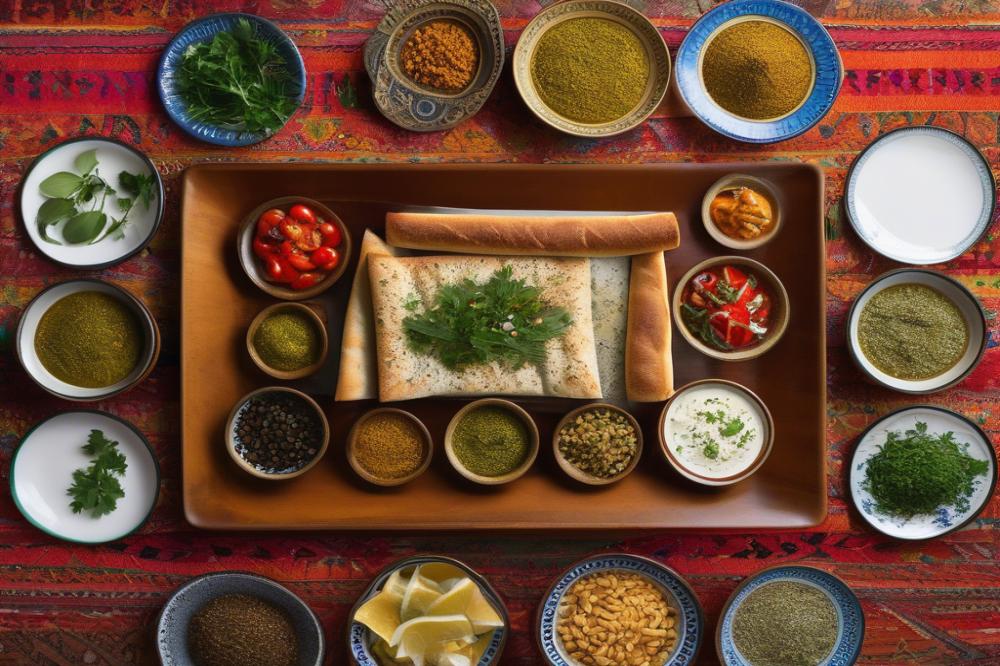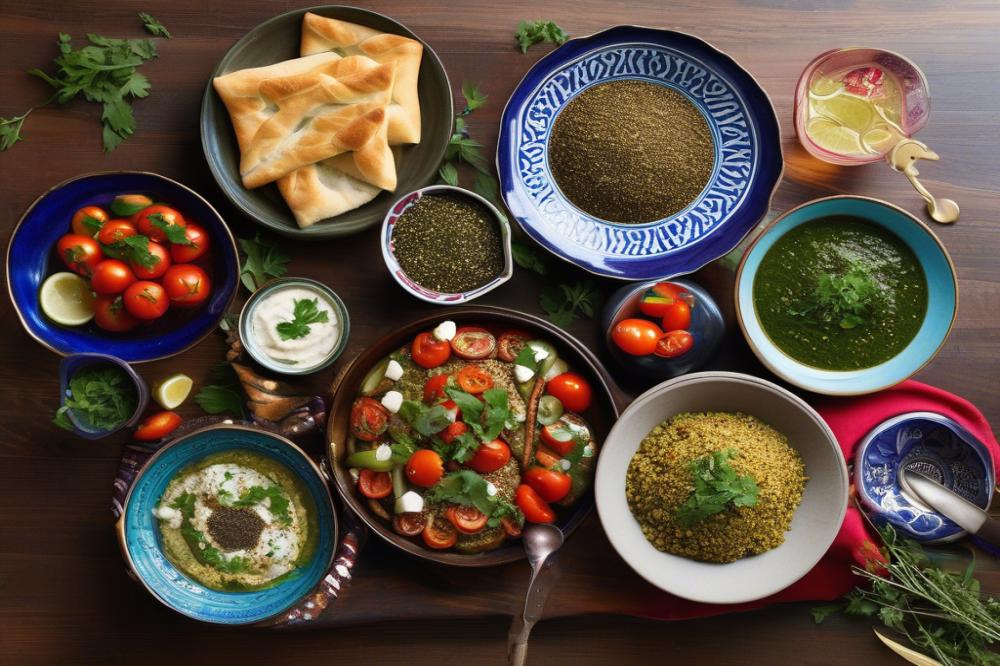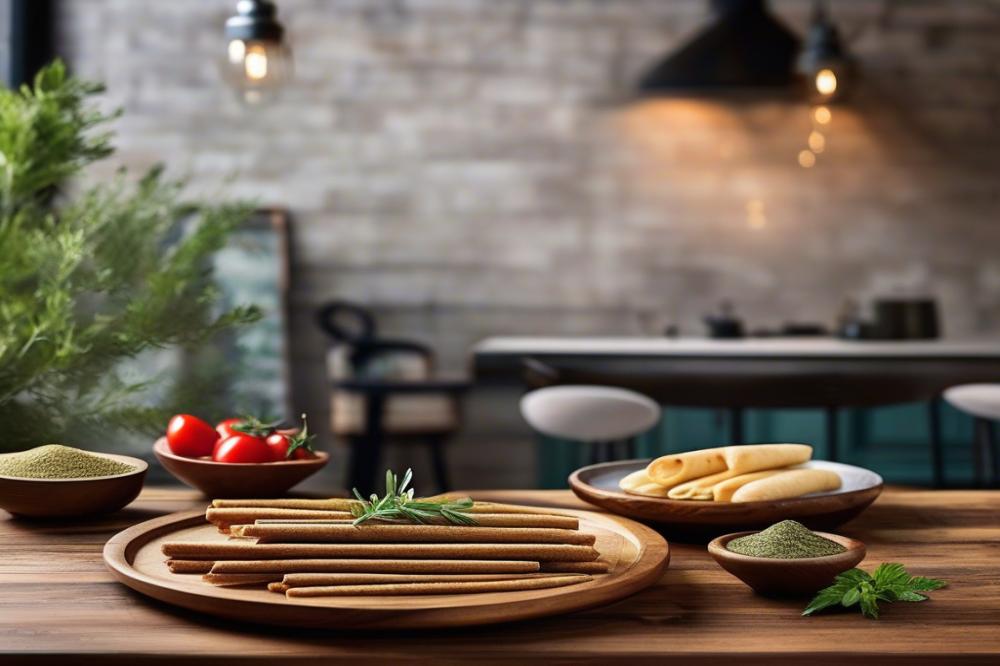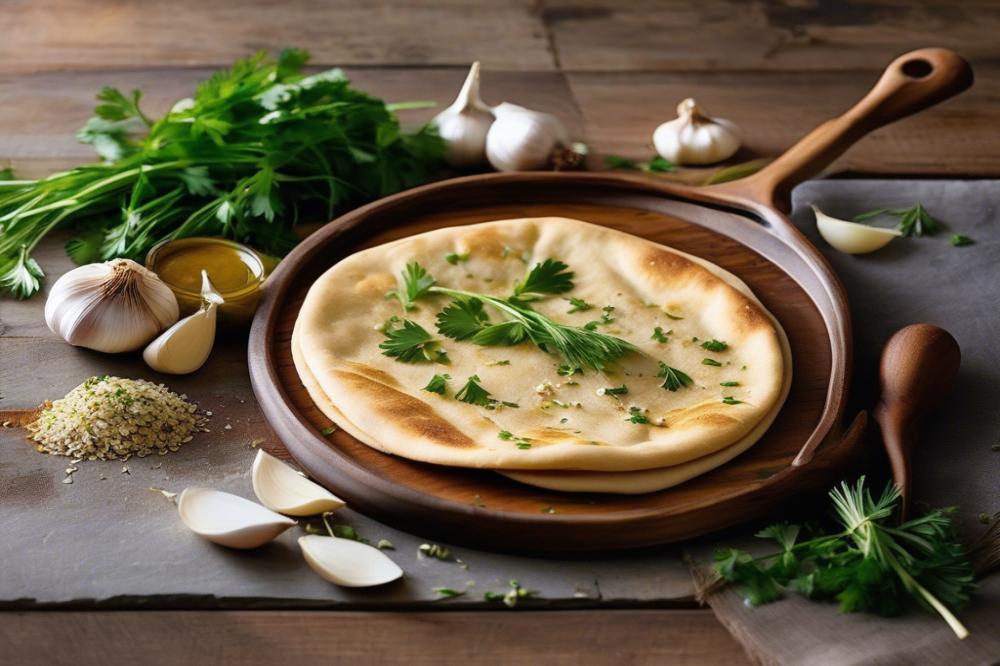Introduction
Lebanese Cuisine is renowned for its vibrant flavors and delightful variety. It represents a cultural tapestry woven from history, geography, and tradition. This culinary art emphasizes fresh ingredients and simple preparations, making it both accessible and delicious. Popular dishes often feature spices, herbs, and vegetables that are abundant in the region.
Among the many treats you’ll find in Middle Eastern snacks, zaatar breadsticks stand out as a beloved choice. These crispy delights are irresistible for their savory taste and satisfying crunch. Made with a unique blend of zaatar, a fragrant mix of thyme, sesame seeds, and tangy sumac, they carry the essence of Lebanese flavors in every bite. These breadsticks offer a delightful way to enjoy traditional ingredients.
Freshness plays a vital role in achieving the best results when preparing zaatar recipes. Using high-quality thyme and sesame seeds enhances the overall experience. Some people even opt to bake their own Lebanese bread or pita to accompany their breadsticks. Easy recipes for appetizers like these not only add flavor but also bring warmth to gatherings. With each bite of these crunchy snacks, one can appreciate the rich heritage of Lebanese Cuisine.
Zaatar Breadsticks: The Perfect Appetizer


Imagine a crunchy, flavorful stick that pairs perfectly with dips and spreads. Zaatar breadsticks offer just that, bringing a taste of Lebanon to any meal. They are a delightful addition to any table, often served as appetizers during family gatherings or special events. These snacks make a great start to a feast, inviting everyone to enjoy the rich flavors of Lebanese cuisine.
The essence of zaatar is a blend of spices, including thyme and sesame seeds. This seasoning is not only popular in Lebanon but throughout the Middle East. Its cultural significance cannot be overstated. Zaatar symbolizes unity and hospitality in Lebanese tradition. Many families have their own special recipes, passed down through generations, making it feel personal and meaningful.
People often enjoy breadsticks as a quick and easy choice for snacking. They fit well into busy lifestyles, offering a convenient way to indulge in tasty treats. You might find them served with hummus or yogurt dips, enhancing the whole experience. Traditionally, Lebanese bread, like pita, is made fresh and used alongside these snacks. Thus, zaatar breadsticks bridge the gap between wholesome eating and delightful taste.
Ingredients and Quantities


To create delicious Lebanese breadsticks, gather the following ingredients. For a perfect batch, you will need:
- 2 cups all-purpose flour
- 2 teaspoons instant yeast
- 1 teaspoon salt
- 1 tablespoon sugar
- 3/4 cup warm water
- 1/4 cup olive oil
- 3 tablespoons zaatar seasoning
- 1 tablespoon sesame seeds
Nutritional Information for Each Ingredient
Let’s take a closer look at these ingredients and their benefits. All-purpose flour serves as the primary base, supplying carbohydrates for energy. Instant yeast helps the dough rise, creating a light texture. Healthy doses of salt and sugar balance flavors while contributing to the overall taste of your breadsticks.
When choosing warm water, the right temperature encourages yeast activation, essential for baking. Olive oil not only adds moisture but also enhances flavor, making the breadsticks richer. Zaatar seasoning, a blend of thyme, sesame seeds, and other spices, brings a unique Middle Eastern flair. It’s packed with health benefits. The thyme in zaatar contributes antioxidants and supports digestion, while sesame seeds provide healthy fats and protein.
Using whole ingredients like these is key. Each component plays a role in creating a wholesome snack that’s not just tasty but also nutritious. When these ingredients are combined, they form a delightful mix. Your final product can serve as a fantastic appetizer parties or even as a side to enjoy with soup or salad.
The zaatar flavor shines through in every bite of these easy recipes. They can complement a variety of dishes, whether served with some warm pita or as part of a mezze platter. Remember, baking can be fun and fulfilling, and these breadsticks make for a splendid introduction to Middle Eastern snacks.
Cooking Instructions


Mixing Dry Ingredients
Start by gathering your dry ingredients. Combine all-purpose flour, salt, and dry yeast in a large mixing bowl. Stir them together until well mixed. Adding a bit of zaatar now can infuse the dough with flavor from the very start. This spice blend includes thyme, sesame, and other herbs, giving a unique taste to what will become your breadsticks.
Combining Wet Ingredients
Next, prepare the wet ingredients. In a separate bowl, whisk together warm water and a small amount of honey. This mixture feeds the yeast, helping it rise better. Once combined, pour the wet ingredients into the dry mix slowly. Using a wooden spoon, stir until the dough begins to come together.
Kneading the Dough
After the dough forms, it’s time to knead. Dust a clean surface with flour to prevent sticking. Place the dough on this surface and start kneading with your hands. Push it down with the heels of your palms and fold it over. Repeat this process for about 5 to 10 minutes. The goal is a soft and elastic dough.
Letting the Dough Rise
Place your kneaded dough into a lightly greased bowl. Cover it with a damp cloth or plastic wrap. This will help it rise. Set it in a warm area for about 1 hour. During this time, the dough should roughly double in size. Patience is key here, as this step develops the flavor.
Shaping the Breadsticks
Once the dough has risen, punch it down to release air bubbles. Turn it out onto your work surface again. Divide it into equal portions, rolling each piece into thin ropes. The breadsticks should be about 10 inches long. This technique will help create even baking.
Sprinkling Zaatar and Sesame Seeds
Prepare a mixture of zaatar and sesame seeds in a small bowl. Dip each breadstick into a bit of olive oil first, ensuring it’s lightly coated. Roll the sticks in the zaatar and sesame combination for extra flavor and crunch. This step enhances the visual appeal and taste.
Baking Temperature and Time
Preheat your oven to 400 degrees Fahrenheit. Line a baking sheet with parchment paper to prevent sticking. Arrange the prepared breadsticks on the sheet, leaving space between each one. Bake them for about 15 to 20 minutes. They should turn golden brown and crisp. Keep an eye on them to avoid overbaking.
Optional: Adding a Drizzle of Olive Oil Before Serving
After baking, take them out and let them cool slightly. Drizzling a small amount of olive oil over the warm breadsticks can enhance the flavor. This extra touch is not necessary, but it adds a rich finish. Serve your delightful Lebanese bread as an appetizer or a satisfying Middle Eastern snack.
Serving Suggestions and Variations


When it comes to serving zaatar breadsticks, the options can be delightful. These savory snacks are excellent on their own, but they truly shine when paired with dips. Consider serving them alongside creamy labneh or rich hummus. These spreads complement the herbal notes of zaatar beautifully. Guests will appreciate the smooth textures combined with the crunchy breadsticks.
Incorporating breadsticks into a mezze platter is another way to enjoy them. Include a variety of Middle Eastern snacks like stuffed grape leaves, olives, and marinated vegetables. Arranging them artfully on a large platter creates an inviting presentation. This setup is perfect for gatherings or casual dinners.
Possible Variations of the Recipe
There are many ways to customize this recipe and make it your own. One popular option is adding cheese. Feta or mozzarella can be sprinkled on top before baking. Melty cheese adds an extra layer of flavor. Olives are another delicious addition. Chopped olives can be mixed into the dough or used as a topping for added saltiness.
You could also experiment with different herbs and spices. Instead of just thyme, consider blending in oregano or rosemary. Creating your own spice mix can yield a unique taste. Adjust the seasoning to your preference, and feel free to get creative with toppings, like sesame seeds. Combining different flavors can lead to amazing results.
Using Lebanese bread or pita as a base for your breadsticks is another fun twist. This alternative can change the texture and enhance the overall experience. Baking the breadsticks until golden will give them a satisfying crunch. These easy recipes are ideal for both appetizers and casual snacking occasions.
Wrapping Up Your Zaatar Breadsticks Journey
Making zaatar breadsticks is not only easy but also rewarding. This delightful recipe showcases how simple ingredients can create something delicious and delightful. With just a few steps, anyone can enjoy the warm embrace of freshly baked snacks that carry the vibrant flavors of the Middle East.
Your kitchen can transform into a hub of enticing aromas with little effort. Why not take a chance and whip up a batch at home? The process is straightforward, and the end result is sure to impress family and friends alike. Freshly made breadsticks, seasoned with aromatic zaatar, can elevate any meal or serve as a sophisticated appetizer.
This experience opens the door to exploring more Lebanese dishes and secrets. Baking does not need to stop here. A world of Middle Eastern flavors awaits those who are curious. Dive deeper into the rich tapestry of Lebanese cuisine and discover other easy-to-make recipes. Authentic tastes can transform your everyday meals. Enjoy every bite and embrace the joy of cooking!



